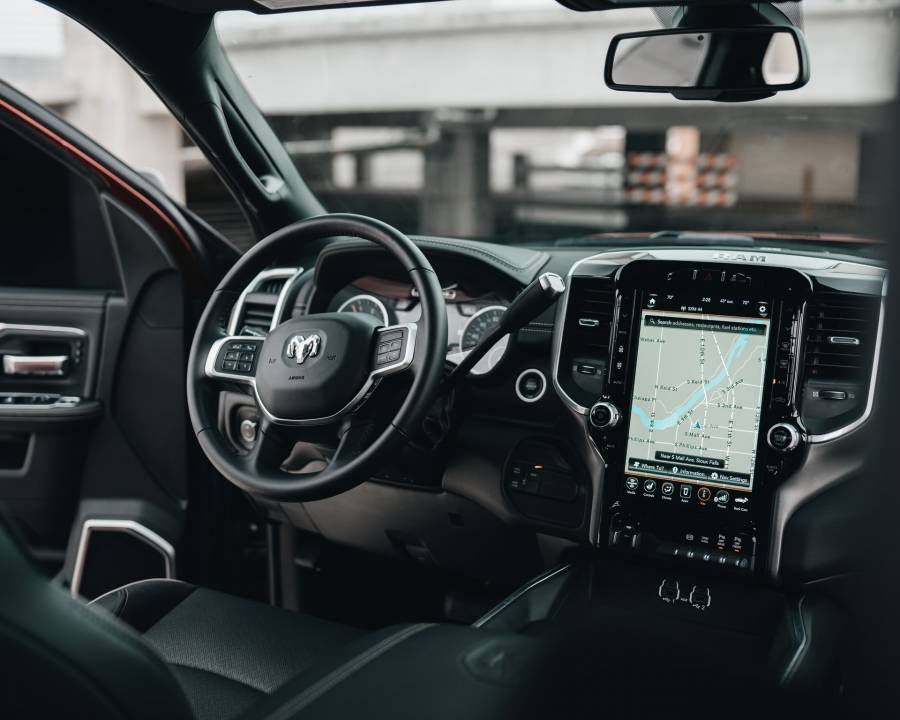Quick Navigation
Everyone hopes that their car doesn’t run into problems, especially when far away from the mechanic’s shop. But since cars use technology nowadays, they are prone to issues.
For instance, if your car has a stop/start functionality, it can encounter a problem displayed as “Stop/start not ready – battery charging” on your car’s infotainment screen.

If this message doesn’t make sense to you, you might start scratching your head. But that shouldn’t be the case!
This article will look at what causes this alert and how to fix it. We will also look at how to restart the system, especially after resolving these issues.
What causes “Stop/start not ready – battery charging”
The “stop/start not ready – battery charging” merely tells you to allow the Energy Storage System some time to charge.
Usually, driving for about 45 minutes will charge the ESS entirely and make the stop/start technology work as it should.
But sometimes, there is an issue that prevents the ESS from charging. In this case, you will keep getting the “stop/start not ready – battery charging” message.
This message is usually attributed to problems with charging that include:
Faulty Auxiliary Battery
The purpose of the auxiliary battery is to power the engine when the main battery has a low voltage. But like any battery, it can get damaged due to many reasons.
For instance, leaving the car running for a long time will overheat it, thus damaging its cells. Also, electrical malfunctions such as electric shocks can render the battery useless.
A malfunctioned battery will not hold sufficient voltage to turn on the engine.
As such, you will keep getting the warning “stop/start not ready – battery charging” whenever you try to start the engine.
If the auxiliary battery is responsible for the warning message, you will have to replace it with a new one. You can use your car’s manual to check its model and how to replace it.
It is advisable to seek the services of a professional if you don’t have to skills to replace it. Any wrong installation can affect the ESS and even the entire vehicle.
Faulty Cables
The auxiliary battery may be in perfect condition, but its cables are faulty. The cables can get damaged due to corrosion by the battery fumes.
The corrosion will inhibit the voltage from reaching the auxiliary battery during charging.
Consequently, it will take a long for this battery to get charged, and hence the “stop/start not ready – battery charging” will be displayed on the screen.
Luckily, it is easy to replace a faulty cable. All you have to do is get a new one, unplug the damaged one and then plug in the healthy one.
But after doing so, it’s essential to make sure that they are tightly fixed to function perfectly.
Faulty Alternator
The alternator in your car is what supplies voltage to the auxiliary battery. It does so by converting the combustion energy that your vehicle makes into electric voltage.
This voltage is provided to the various electrical components in the car, including both the auxiliary and main battery.
But like any other component in your vehicle, the alternator can get faulty. It happens when it overheats due to overusing the car in hot weather.
Also, short circuits can damage the diodes, thus making the alternator defective.
A faulty alternator will not supply enough voltage to charge the auxiliary battery. In fact, in a worst-case scenario, the alternator might fail to work at all.
As a result, the auxiliary battery will have low voltage, and hence you get the warning “stop/start not ready – battery charging.”
Therefore, you should repair any damaged part in the alternator to fix the warning message.

A Problem With The Terminals
The battery or alternator terminals can also affect the charging system.
For instance, if the terminals have rusted due to battery fumes or moisture exposure, they will allow minor to no voltage to pass through.
Therefore, the ESS will take a long to charge, and hence you will keep getting “stop/start not ready – battery charging.”
Fortunately, you can quickly diagnose a problem with the terminals since the rust will be visible. You will only have to use a screwdriver to scrub off the rust on the terminals.
But if it is hard to fix the issue, it will be advisable to install new ones to fix the problem completely.
The Main Battery Is Draining Too Fast
If the main battery drains fast, it affects the auxiliary battery. It means that the car will rely heavily on the auxiliary battery, making it also drain fast.
To diagnose a problem with the main battery, disconnect the auxiliary battery and run the car using the main battery.
If the main battery is in good condition, it will power all the electrical systems in the vehicle.
If not, you have a faulty main battery that affects the ESS, thus giving the car a “stop/start not ready – battery charging” warning.
In this case, you will have to install a new main battery to resolve the problem completely.
But like the auxiliary battery, it is essential to get a suitable model to avoid a scenario that puts pressure on the ESS.
Does The “Stop/Start Not Ready – Battery Charging” Go Away On Its Own?
In most cases, the “stop/start not ready – battery charging” will go away on its own. It happens when the auxiliary battery is fully charged.
Therefore, after repairing or replacing the components that made it malfunction, you should allow it to charge for a few minutes before hitting the road.
However, if the warning message does not go away after doing so, you might have to restart the system.
How To Restart The Stop/Start Technology
There are a few steps that you can use to restart the system after fixing the issues that cause the “Stop/start not ready – battery charging” message. They include:
- Drive your car to a vacant parking space and disconnect all the components that use electricity. Allow around two minutes to pass and then start the engine. The “Stop/start not ready – battery charging” message might go away after doing so. But if it’s still there, proceed to the next step.
- Disconnect and reconnect the negative auxiliary terminal a few times. Move to step three if the “Stop/start not ready – battery charging” alert is still there.
- Turn your car’s ignition key on and off. It should fix the problem, but you may have another hidden problem that needs professional help if it does not.
Wrapping Up
The “Stop/start not ready – battery charging” message doesn’t have to ruin your day. It is because it can go away on its own after the auxiliary battery is fully charged.
But the fact that it sometimes indicates an error with the charging system should also give you a reason to find out the problem.
For instance, the “Stop/start not ready – battery charging” that recurs may indicate a fault in the auxiliary battery, primary battery, battery cables, or battery terminals.
Therefore, you should fix it after diagnosing the issue to eradicate the message.

James has been a car enthusiast since his childhood when he learned the differences between a ford and a chevy from his father. He loves to drive and restore old cars with a special drive for Italian marvels. Currently, he has a 1968 Alfa Romeo. He has studied aeronautics and civil aviation in his college and still gets smitten by Galant SS and Lancer GSR.
He is a New York-based product training director working with a giant automotive retailer. He loves to review and uncover the vehicles and their fascinating stories. He believes in keeping it legitimate with a keen passion for research on the latest technological upgrades in cars. While reading his articles or blogs, you can sense the extensive research and dedication backing the piece of text. He loves fried chicken, music, and spending quality time with his pet dog.






